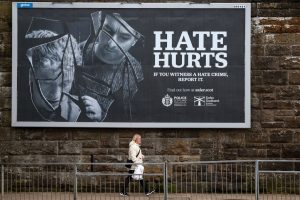I usually try to read a ‘real’ newspaper every week, over a coffee. However, I am a reluctant subscriber to a couple of on line newspapers and I tend to skim over the headlines to see whether anything catches my eye. As I wrote in one of my earlier essays, occasionally I do this and as I move on to the next article I get the impression that I have missed something that warrants more attention. This happened a couple of days ago and the article I had bypassed was entitled, If there’s so much buyer’s remorse about Brexit, why is Nigel Farage the rising figure in UK politics? What caught my attention was the feeling that for such a complex question as Brexit, the focus on Farage promised a less than nuanced answer. I was not surprised to see that the author was Fintan O’Toole, with whom I have disagreed on many issues. His main argument seems to be that, Brexit failed, the majority would like a closer relationship with the EU but due to a rise in English Nationalism, the UK will fall apart with disastrous consequences for Irish Unity.
I will try not to revisit the Battle of Brexit but will endeavour to give some context to the fundamentals. In the beginning, Britain was sold on the idea that they were joining a super European Commonwealth known as the European Economic Community. At the time there were a large number of issues at play including, inter alia, regional differences, the South of England was pro joining and the North against. Political, Labour and the Unions against and Conservatives and Business for. Demographic, young people for, older against. In other words, in almost any way that you could slice and dice the vote, there was an opinion. Even so, on 28th October 1971 The House of Commons voted 356–244 in favour of the motion to join the EEC. However, there was a question as to whether the UK was a good fit for Europe. This view was encapsulated by Charles De Gaul who thought that the UK was culturally closer to the US than it’s European neighbours. He gave this as his reason for twice thwarting Britain’s accession hopes. (See History Matters – A Frenchmans View of Brexit) What I am trying to illustrate was that there were a large number of issues that made up the debate but none seemed to have an overtly English nationalistic base. You could make an argument that one of the main drivers was class and Fintan draws attention to the Remainers overconfidence by not seeing the neglected electorate, discovered by Dominic Cummings, that had such an impact on the 2016 Referendum.
Fintan’s article starts with the premise that there is extensive “buyers remorse” concerning Brexit and the only thing preventing a return to Europe is an intransigent group of English nationalists. He quotes some statistics showing the effects of the “bitter harvest” unfortunately not referencing his sources. He also uses quotes from the book by Ailsa Henderson and Richard Wyn Jones entitled Englishness The Political Force Transforming Britain. However, I find that some of his conclusions are not supported by the quotes. For example, he says, “over 40 per cent of people in England now say that “English” is a better fit for their sense of identity than “British”. Not surprisingly, these people are much more inclined to support Farage‘s Reform UK or the Conservatives than those who identify primarily as British.” I am not sure whether his statement on the political affiliations mentioned are his opinion, along the lines of, “everyone who has eyes can see that” or is it supported by data from the study. There also seems to be some conflict in tone between Fintan’s analysis and a report, also authored by Ailsa Henderson and Richard Wyn Jones who suggest that rather than a rampant and self destructive crowd of football hooligan Farage supporters, the divide in Britain is far more nuanced and ambivalent than suggested. (see Addendum and link below)
Five years is a short time to determine whether a complete transformation of an economy has been successful or not. Rather like turning an oil tanker around, it takes time. Certainly, you can find no shortage of polls which show unhappiness with the economy but I too can throw some numbers into the mix which show a different picture. Unemployment figures are more or less in line with G7, USA and Germany but well below France and the Eurozone, for example.

Future growth projected by the OECD is positive, relative to the Eurozone.

Do I believe that the UK economy is stable and that we can take our foot of the accelerator? No but I wonder if Fintan has looked at similar surveys in France and Germany and drawn the same conclusions about nationalism in Europe. Of course, Brexit was never just about the economy. Fintan correctly identified the establishment figures who insisted that, “it is the economy, stupid.” They failed to see the shift in the concerns of the electorate towards sovereignty and resentment towards the arrogance of the elites. We should note that this is not a particularly English trait but can be seen in the 2016 and 2024 US elections, recent elections in Italy, France, Poland and Germany and even in Finton’s back yard with the crushing of the two Constitutional Amendments. Yes I agree with Finton that the British economy is in flux but I would suggest that polls reflect frustration that is usually aimed at the poor management of both major parties rather than an attempt to overthrow the system.
It is difficult to assess Finton’s claim of a new English Nationalistic movement because, even he has difficulty defining what it is. As he says, “English nationalism was and is ambiguous and largely unarticulated. For centuries, it was wrapped in a double layer of packaging – Britishness and Empire. But it never went away and Brexit was its moment to emerge. We didn’t really get to hear what it is in simple language, but we were left in no doubt about what it is not – European.” So, according to Finton, New English Nationalism is identified by what it disagrees with? You can select any national poll you like and cobble together a list of complaints and group them in a certain way but that doesn’t, in itself, a Nationalist movement make. I would question the usual reference to Empire in an England where I guess, 80% of people never experienced it. The problem for Finton is that he has the same view of England and englishness that the grandees and elites had in 2016. Finton gives an example of post Brexit English Nationalism by questioning their supposed indifference to the fate of the other regions in the UK. With a super progressive corrupt SNP running Scotland and a “19 per cent higher than the UK average” public spending in Northern Ireland, does anyone think it strange that English taxpayers are ambivalent about funding them? Finton is surprised by the this alleged ambivalence of English voters to a scenario where Scotland and Northern Ireland freely choose to “walk away” from the Union, given the above I am not sure what else he expects the English taxpayer to do. It is interesting that Finton refers to Irish Unification as a future outcome but according to a 2021 poll whilst 67% of people in the Republic are in favour of unification, only 22% are prepared to pay for it. (Irish Independent 01/05/21) I see no difference between the views of the 78% of Irish and 40%+ (Finton’s number [?]) English taxpayers on funding Northern Ireland.
So where are we with Finton’s article? I would agree that the economy is all over the place but look around. Look at where the poster boys and girls of the EU are today. Germany is really struggling with a three year decline after stagnation and France is not much better. Most western countries are facing high post Covid levels of debt and problems connected to immigration. Traditional political Parties are facing competition from the likes of Farage and brought to you from Finton’s back yard, the National Party, The Irish People, Ireland First and the Irish Freedom Party. Frustration with the political elites and bad management of the economy are not confined to England. Yes Brexit was a major event for England but more immediate is the aftermath of Covid and the migrant problem, for example. Farage is the result of a very poor selection of leaders offered to the electorate. I have grave doubts about his ability to galvanise the economy or to keep his promises. In thinking about most problems it is important to step back from the immediate issue and put it in context, so that it can be viewed in it’s entirety with all the variables visible. Fintan’s article has the feeling of a construction that starts with the answer and builds a question around it to prove the point. The Union is under pressure and Brexit may be one factor but it is only one of the many variables that constantly influences our daily lives. In the end, as it stands at the present time, I do not think that Fintan has proved his argument. I do not see a rise of English Nationalism fuelled by Brexit. I can see a situation where the Union disintegrates but it is far from certain and Brexit will not be the main cause.
Addendum
G K Chesterton quote from the 1908 poem ‘The Secret People’: ‘Smile at us, pay us, pass us, but do not quite forget, for we are the people of England that have never spoken yet’.
Britishness means different things – it values different things – in different parts of the state, and the variation is such that anyone tempted to insert a ‘British’ variable in any kind of modelling and expect it to operate in a similar way regardless of where a respondent lives should, quite simply, desist from doing so. Henderson A and Wyn Jones R (2023) The ambivalent union:
English nationalism is absent because there is no need for it. Nationalism flourishes when people feel thwarted. But what England wants, England gets. England, usually, prefers a Conservative government and so Britain, usually, has one. England wanted out of the eu, and Britain did leave. Having your own way is not a recipe for resentment. So on St George’s Day, do the most English thing of all: forget about England. It still has not spoken yet. Bagehot, The Economist, If English nationalism is on the rise, no one has told the English,
Sources
Fintan O’Toole, 27/05/25, The Irish Times, If there’s so much buyer’s remorse about Brexit, why is Nigel Farage the rising figure in UK politics?https://www.irishtimes.com/opinion/2025/05/27/if-theres-so-much-buyers-remorse-about-brexit-why-is-nigel-farage-the-rising-figure-in-uk-politics/
Daniel Harari, 16/05/25, House of Commons Library, GDP international comparisons: Economic indicators,https://commonslibrary.parliament.uk/research-briefings/sn02784/
Brian Mahon, 29 May 2025, Irish Daily Mail, Ireland ‘largely compliant’ with EU hate speech laws – Taoiseach, https://www.pressreader.com/ireland/irish-daily-mail/20250529/281668260904133
McCrone, D. (2023), The Rise and Rise of English Nationalism?. The Political Quarterly, 94: 604-612. https://doi.org/10.1111/1467-923X.13303
Henderson A and Wyn Jones R (2023) The ambivalent union: Findings from the State of the Union survey,
IPPR. http://www.ippr.org/research/publications/the-ambivalent-union and Englishness The Political Force Transforming Britain
Fionnán Sheahan, 01/05/21, Irish Independent, Majority favour a united Ireland, but just 22pc would pay for it
Bagehot, 19/04/23, The Economist, If English nationalism is on the rise, no one has told the English, https://www.economist.com/britain/2023/04/19/if-english-nationalism-is-on-the-rise-no-one-has-told-the-english

 how to administer medication in an emergency. A key element in this saga is that the Levines still don’t know what the offending communication was that triggered the arrest. The Times asked the school, the local council and police for information about the quantity of emails and for examples of what constituted malicious communications. All three declined to give details.(The Times, 29/03/25)
how to administer medication in an emergency. A key element in this saga is that the Levines still don’t know what the offending communication was that triggered the arrest. The Times asked the school, the local council and police for information about the quantity of emails and for examples of what constituted malicious communications. All three declined to give details.(The Times, 29/03/25)


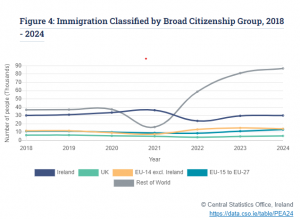 Whichever, figure you take it is an enormous strain on public services and local communities. For any journalist to produce any article on the impact of immigration, without putting the numbers in context is at best incompetent.
Whichever, figure you take it is an enormous strain on public services and local communities. For any journalist to produce any article on the impact of immigration, without putting the numbers in context is at best incompetent.


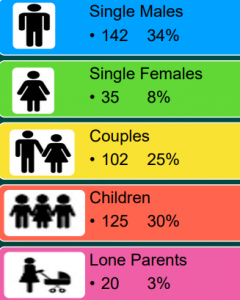
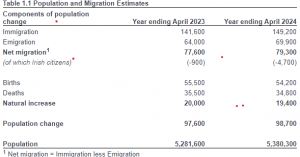
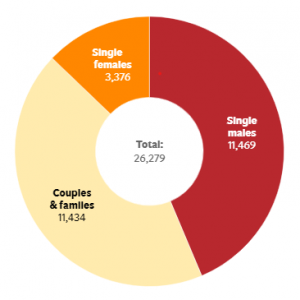





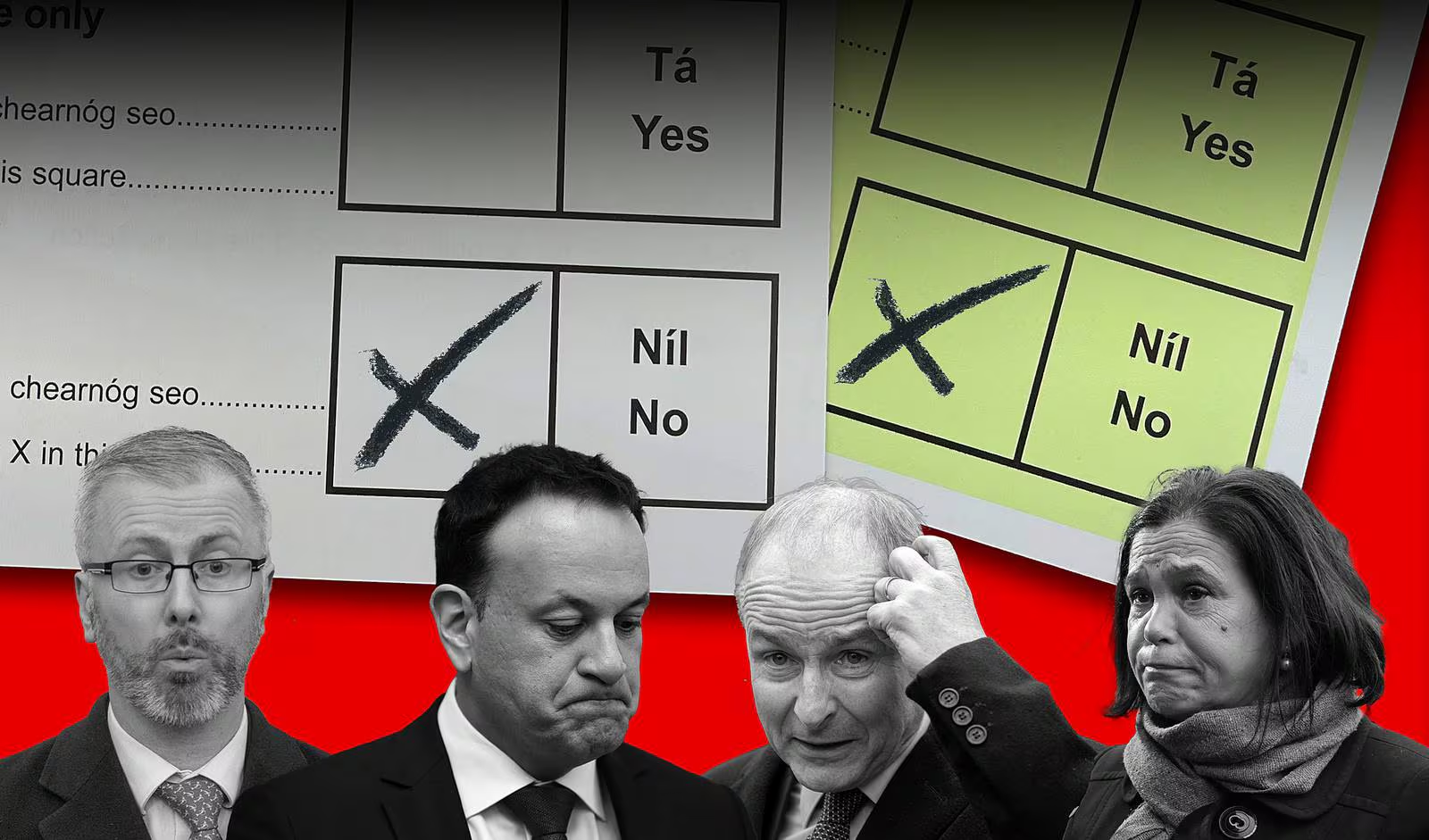




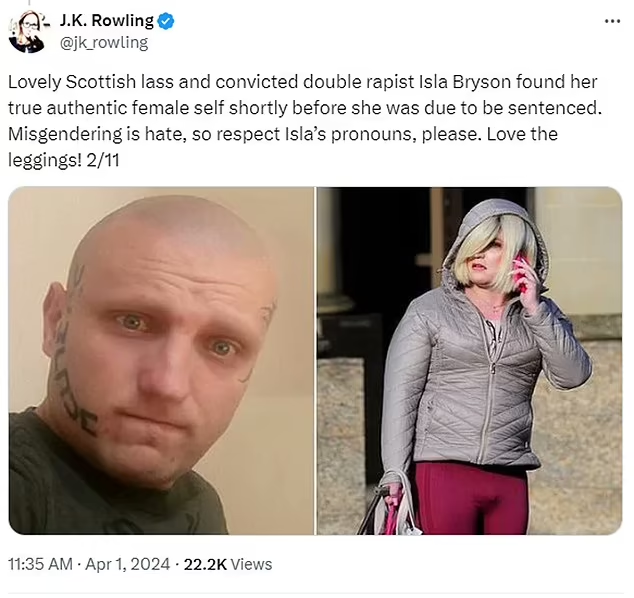 about assurances from senior bureaucrats that we can sleep safely while the experts are on the job. It was the Scottish Prison Service (SPS) advised by the Scottish Trans Alliance, who designed the gender identity and gender reassignment policy to be implemented in Scottish Prisons. As JKR pointed out in her tweet this enabled Adam Graham (opposite) to be remanded in a women’s prison before public opinion forced a reversal. (see my essay
about assurances from senior bureaucrats that we can sleep safely while the experts are on the job. It was the Scottish Prison Service (SPS) advised by the Scottish Trans Alliance, who designed the gender identity and gender reassignment policy to be implemented in Scottish Prisons. As JKR pointed out in her tweet this enabled Adam Graham (opposite) to be remanded in a women’s prison before public opinion forced a reversal. (see my essay 
